Collaboration
Why hybrid AEC workflows feel broken (and how to fix them)
November 2025
5 mins

Table of contents
Your files, faster.
Access any file instantly, anywhere. Collaborate in real-time from one always-up-to-date, secure cloud filespace.
Hybrid is here to stay.
Most AEC teams now operate across headquarters, remote offices, home setups and job sites. On paper, that flexibility should speed up delivery and collaboration.
In reality? It often slows everything down.
Designers, engineers and contractors are juggling massive CAD and BIM files across NAS devices, VPNs and cloud buckets. Each system was built for a different era and none of them truly work together.
The result: duplication, delays, security gaps and lost hours that never make it onto the timesheet.
The truth is, storage just hasn’t kept up with the way AEC teams actually work.
Why hybrid feels broken
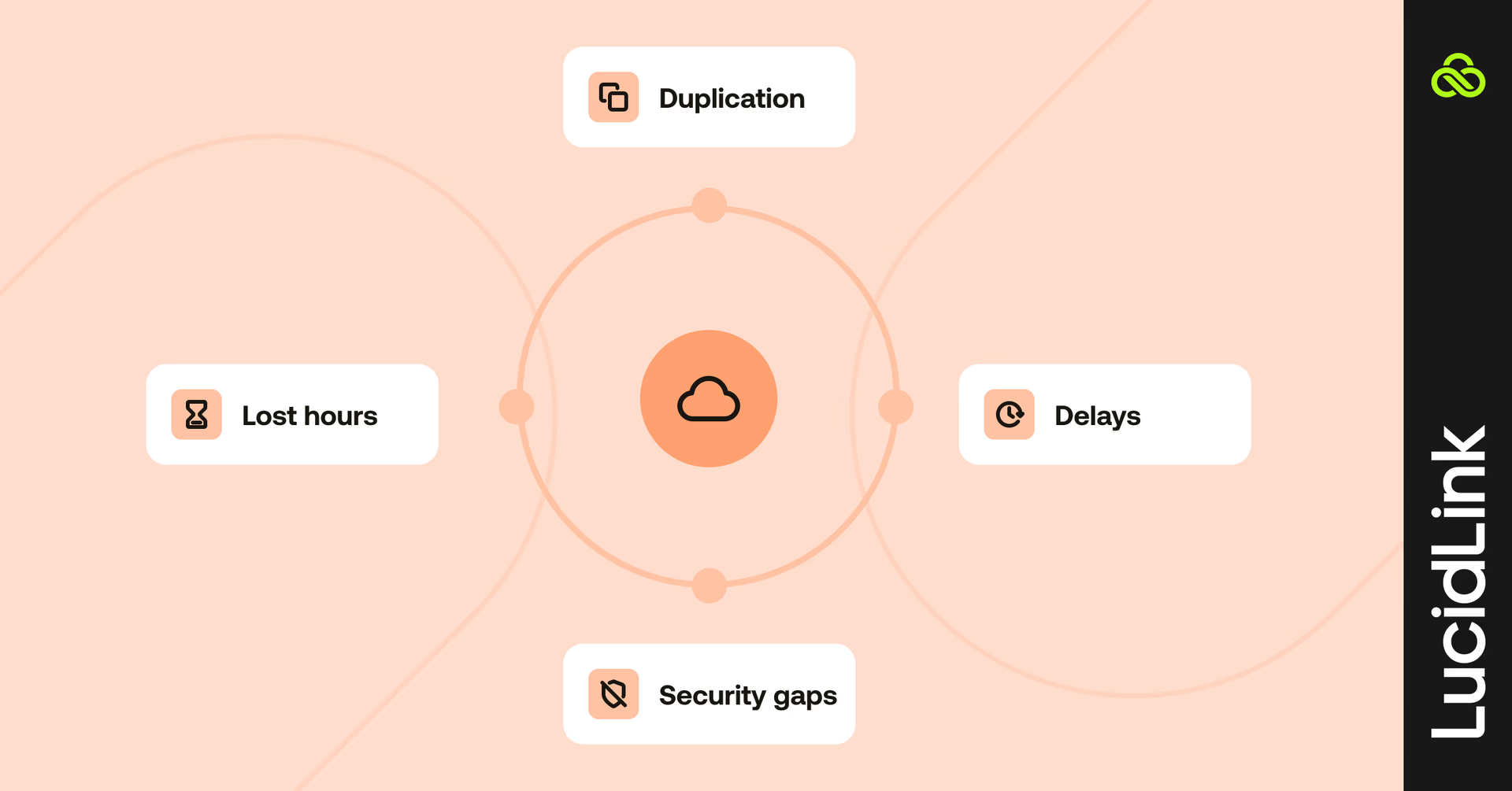
If you work in IT or manage AEC workflows, you’ve probably heard these before (or said them yourself).
The VPN’s crawling again
CAD and BIM files are huge. VPNs were never designed for real-time collaboration. Waiting on downloads or syncs adds up to hours of lost productivity.
Which version are we working on?
With files scattered across SharePoint, Dropbox, NAS drives and email attachments, version chaos is inevitable. One small change in the wrong file can set a project back days.
Why am I still troubleshooting storage instead of planning IT strategy?
Instead of driving innovation, IT teams are stuck fixing sync issues, permissions and corrupted files.
The outcome? A cycle of rework, slowdowns and frustrated teams.
Why traditional storage can’t handle AEC workflows
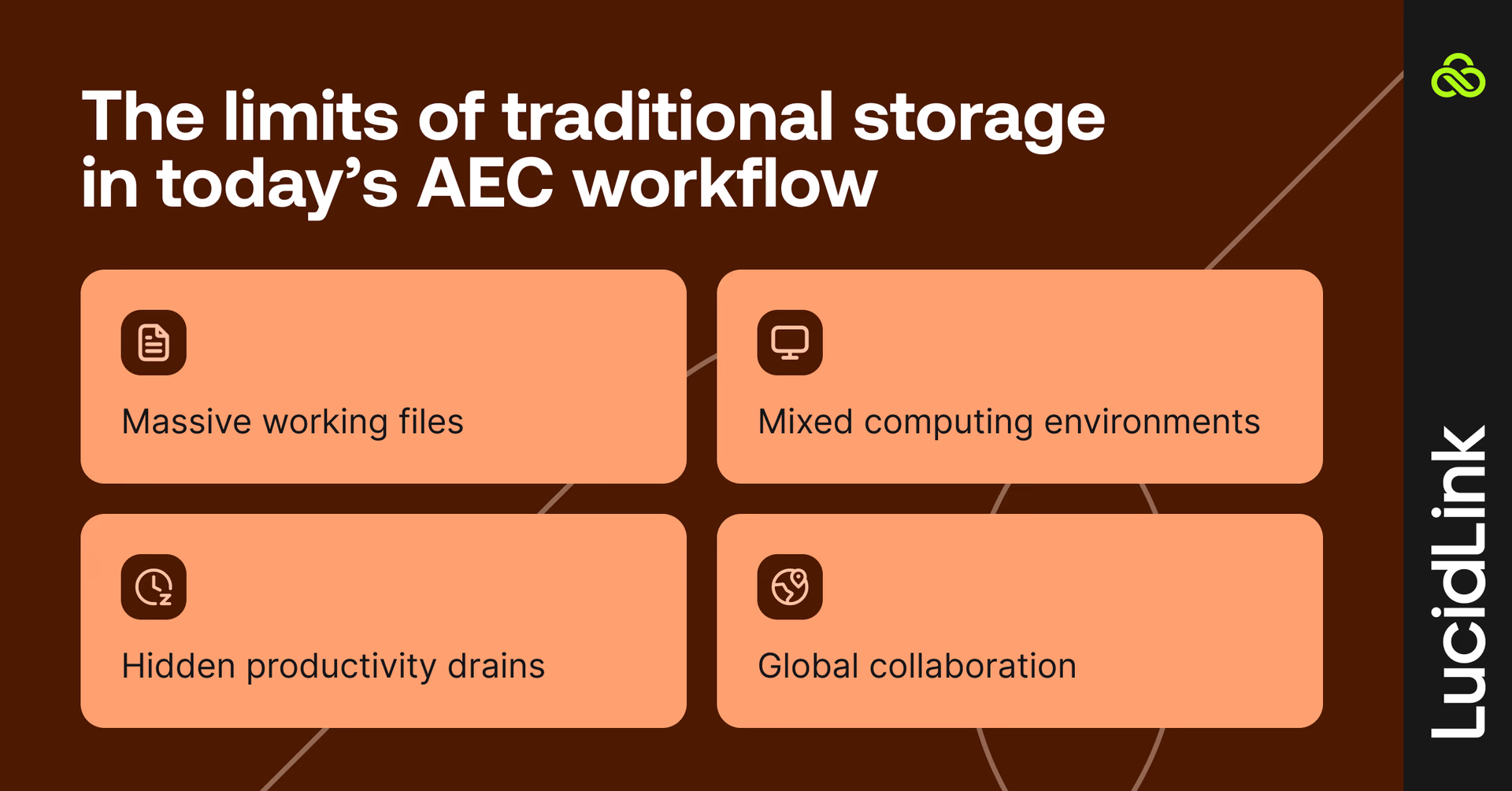
The AEC industry puts a unique strain on IT infrastructure:
Massive working files: point clouds, CAD drawings, Revit central models. We’re talking hundreds of GBs, often terabytes.
Mixed computing environments: from high-powered workstations to remote laptops and field tablets, all need simultaneous access to the same data.
Hidden productivity drains: slow file access over VPNs, fragmented storage and outdated infrastructure quietly steal hours from your team every day.
Global collaboration: multiple offices and partners must work on shared models in real time.
Each of these compounds the other.
Slow VPNs + large files + version conflicts = broken hybrid workflows.
Read more about the hidden cost of slow file access for AEC teams.
The fix: one global filespace
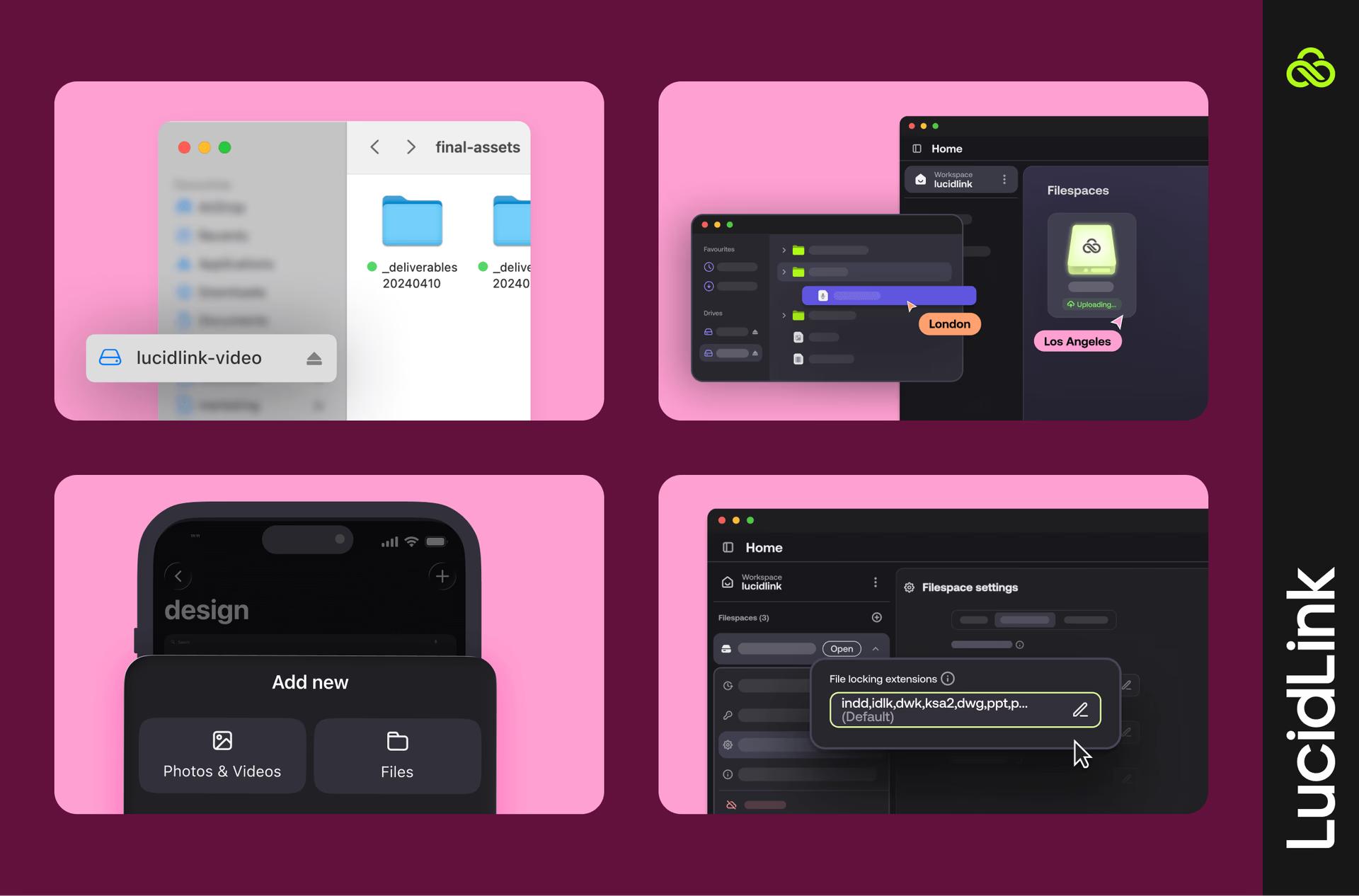
Instead of constantly moving files around, what if your teams could just work directly from them, anywhere in the world?
With LucidLink, files are streamed in real time straight from the cloud. Think of it like your project drive, but one that follows your team wherever they go. Without the lag, the duplicates or the VPN headaches.
Here’s how it works:
Real-time access
Open and edit CAD, BIM, GIS, point cloud and PDF files instantly, as if they were stored locally.
Whether your architect is at home, your engineer’s in the field or your designer’s in another office, everyone’s connected to the same data without delays.
One source of truth
A single, always-up-to-date folder structure in the cloud replaces scattered storage. No duplicates, no confusion, just one shared workspace for the entire team.
File locking built in
LucidLink supports native Windows file locking and full Revit central model workflows. Preventing overwrites, broken models and “who saved it last?” moments.
Works everywhere, on anything
Windows, Mac or Linux, it doesn’t matter. Your whole team can access the same files, in the tools they already use. No special hardware or complex setup, just plug in and start working.
Instead of chasing files, your files come to you, instantly, securely and in real time.
How AEC teams win with real-time workflows

AEC teams everywhere face the same challenge: massive files, tight deadlines and distributed teams. Collaboration shouldn’t mean compromise.
That’s why firms like Torti Gallas + Partners and EVS turned to LucidLink, to connect architects and engineers in real time, without the lag, sync delays or IT overhead of legacy systems.
Torti Gallas + Partners: designing without boundaries
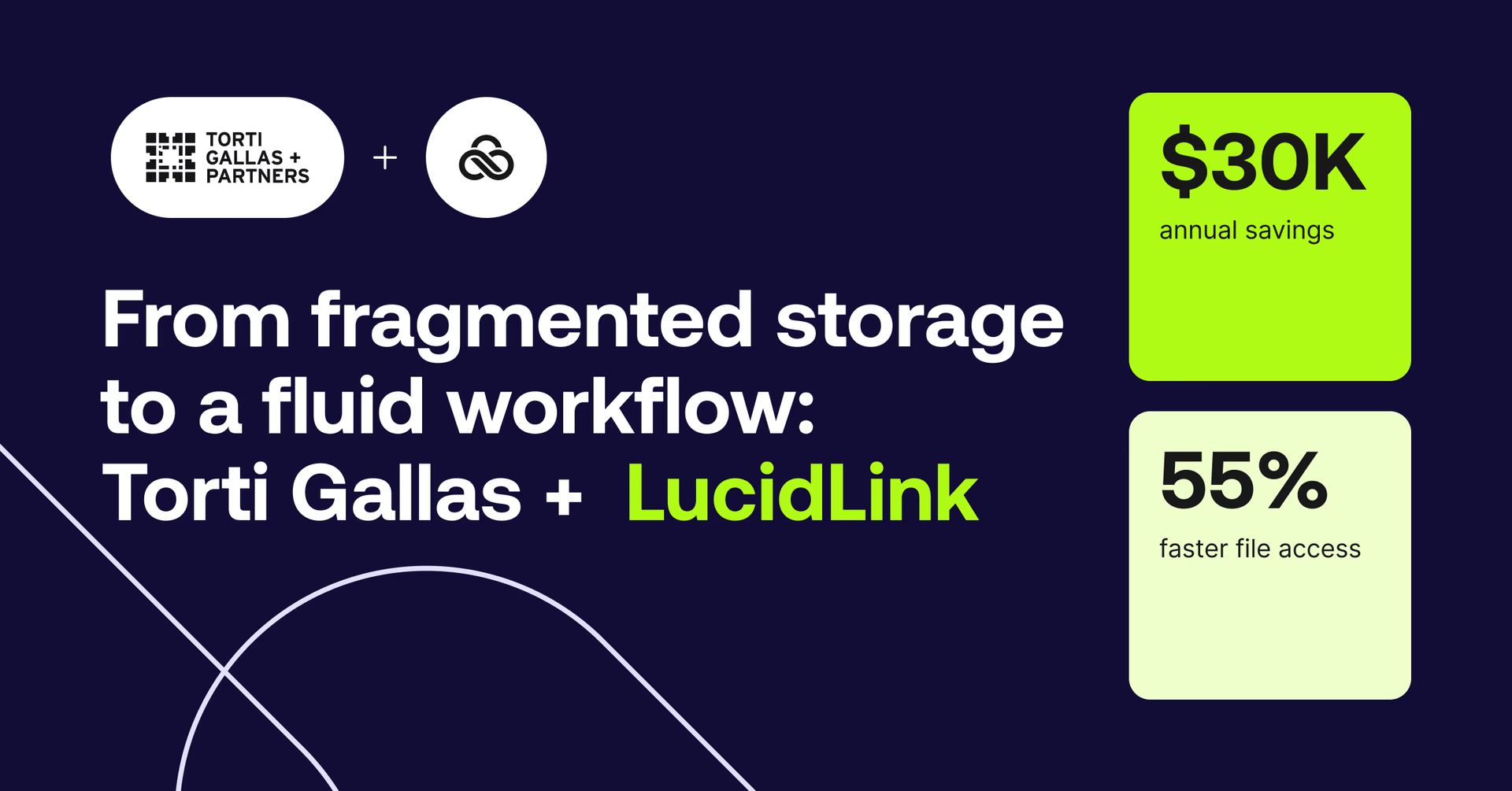
For Torti Gallas + Partners, one of the largest architecture and urban design firms in the U.S. — project collaboration spans continents. But when Revit models ballooned in size and offices multiplied, traditional storage hit a wall.
“We had a lot of siloed NetApp storage systems that were aging and we needed something accessible from both the office and remotely,” says Omer Mushahwar, CTO at Torti Gallas + Partners.
With LucidLink, TG+P unified seven network drives and over a dozen data silos into one global filespace. Architects now open and save Revit, AutoCAD and Civil 3D files in seconds — no VPNs or remote desktops.
The impact:
$30K annual savings on storage and infrastructure
55% growth in storage capacity with zero disruption
Seamless collaboration across U.S. and international teams
Read the full story here.
EVS: engineering speed and scale
EVS, a fast-growing solar engineering firm, faced a familiar bottleneck — slow VPNs, ballooning SAN costs and engineers losing hours each day waiting for files.
“Opening or saving a file could take five to ten minutes,” says Wally Warwick, IT Manager at EVS. “Multiply that across dozens of engineers, and you’re burning expensive hours just waiting for files.”
LucidLink changed everything. Now, AutoCAD, Civil 3D and ETAP project files open in under 30 seconds, even from home broadband connections.
The results:
90% faster file access
200+ billable hours/month recaptured
$80K saved by avoiding costly hardware upgrades
Remote file access used to be on my task list every week. Since switching to LucidLink, I haven’t thought about it once.
Wally Warwick,IT Manager at EVS
Read the full story here.
Hybrid doesn’t need to be difficult

The way AEC teams work has evolved, but traditional storage hasn’t. VPNs, sync delays and duplicate files are symptoms of old infrastructure trying to power a modern, distributed workforce.
With LucidLink, instead of copying and transferring files, teams stream them in real time from a single global filespace. Designers, engineers and project managers can open massive Revit models or CAD drawings instantly without downloads, VPNs or waiting.
That means faster projects, fewer headaches and happier teams.
Whether you’re scaling across offices or collaborating with partners around the world, LucidLink gives you one secure, synced and always-up-to-date home for your project data.
Get started with LucidLink today and turn hybrid chaos into effortless collaboration.
FAQs
Hybrid AEC workflows are difficult because teams juggle massive CAD, BIM and Revit files across NAS, VPNs and cloud storage. Different systems don’t always play well together, leading to version chaos, slow access and lost hours.
VPNs weren’t designed for real-time collaboration on huge project files. Waiting on downloads, syncs or transfers can add hours of lost productivity, delaying deadlines and frustrating engineers.
Scattered storage across SharePoint, Dropbox, NAS drives and emails creates version conflicts, duplicates and security gaps. This slows projects, frustrates teams and forces IT into reactive firefighting.
LucidLink streams files in real time from a single global workspace. Architects, engineers and project managers can access large Revit or CAD files instantly from anywhere, keeping everyone on the same version.
LucidLink supports all your AEC tools — including Revit, AutoCAD, Civil 3D, MicroStation, Bluebeam, Rhino and more. If it works with a local drive, it works with LucidLink. LucidLink also supports native Windows file locking and full Revit central model workflows to prevent version conflicts and overwrites.
No hardware is required to get started. LucidLink runs entirely in software. For fast access at offices with sluggish network speeds, TeamCache can be deployed on a lightweight, on-site cache node.
Keep reading

Product & news
Collaboration
Cloud storage
Why sync when you can stream? File streaming vs sync and share
Explore how sync and share tools disrupt large file workflows and how LucidLink’s file streaming platform delivers instant, secure file access from anywhere.
24 November 2025, 6 mins read

Collaboration
In the field
Madecraft’s post-production hacks for smooth workflows
Discover how Madecraft slashes hidden costs of post-production, boosting efficiency, saving time and keeping creativity flowing.
21 November 2025, 6 mins read
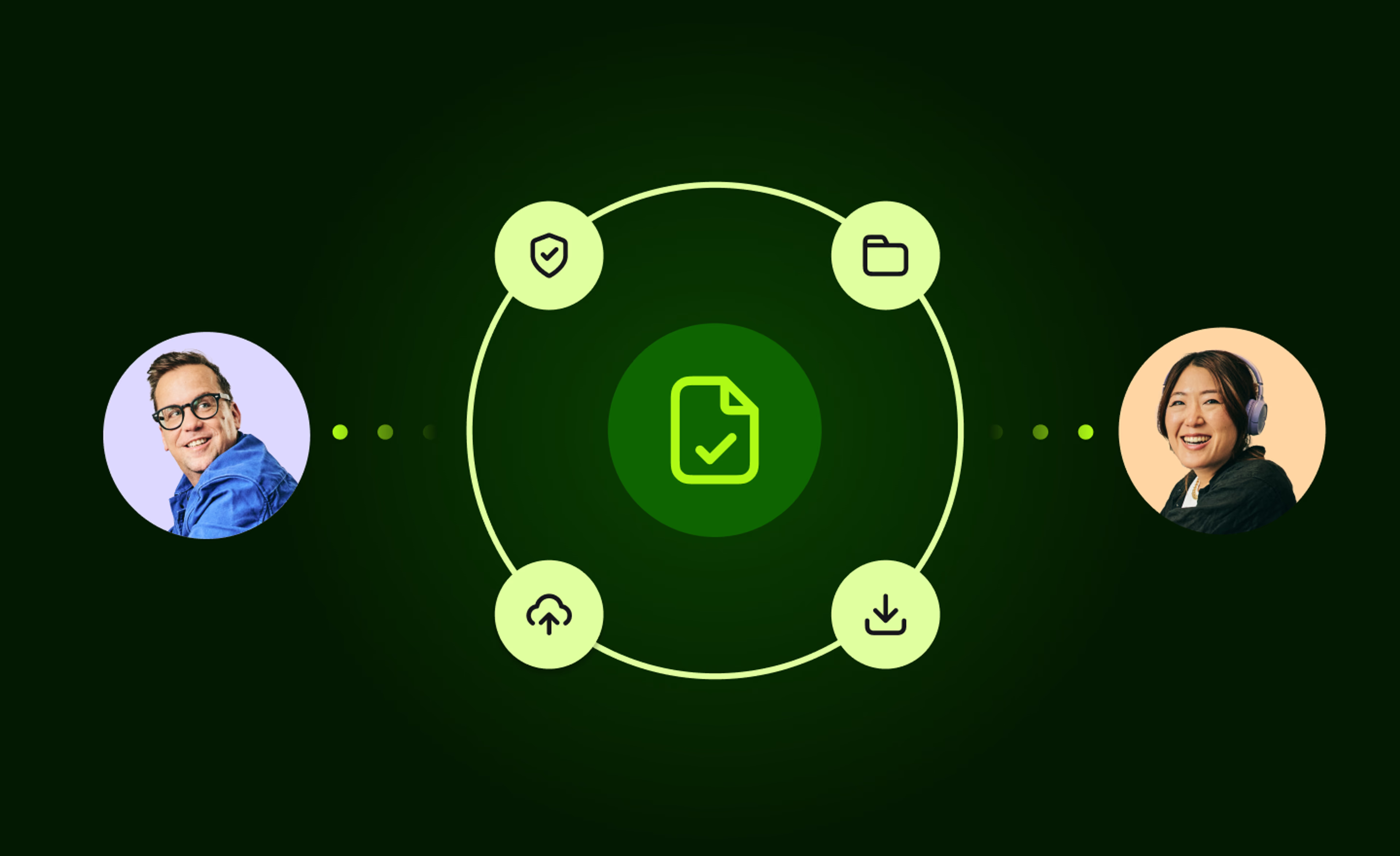
Collaboration
How to easily share digital assets: fast & secure methods
Learn how to easily share digital assets. Discover the best way to share large files securely, collaborate in real time and keep creative work moving.
04 November 2025, 7 mins read
Join our newsletter
Get all our latest news and creative tips
Want the details? Read our Privacy Policy. Not loving our emails?
Unsubscribe anytime or drop us a note at support@lucidlink.com.